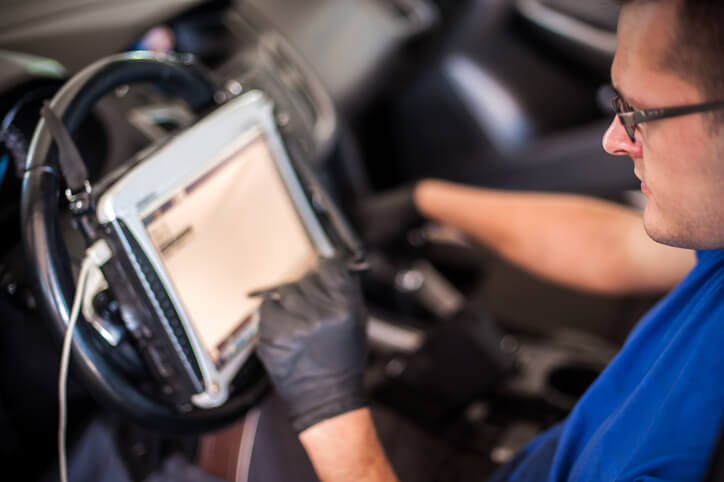When Software Updates Fix Mechanical Problems: Automotive Training in the Digital Age
The days of fixing a vehicle solely with a wrench and a keen ear are long gone. Today’s vehicles are digital marvels, loaded with sensors, modules, and onboard computers. As a result, automotive training must now prepare future mechanics not just to replace brake pads or swap out filters, but to diagnose and often resolve issues using software.
If you’re thinking about joining an automotive school, you need to understand how integral software updates have become in day-to-day repair scenarios. This blog examines the increasing significance of software solutions in contemporary diagnostics and how CATI School is equipping students with the digital skills necessary to succeed in today’s automotive repair industry.
Why Software Updates Are Becoming the “Wrench” of the Future
Modern vehicles rely on dozens of electronic control units (ECUs) that govern everything from engine performance and transmission behaviour to safety systems and infotainment. These systems are updated regularly by manufacturers to:
- Improve fuel efficiency
- Correct safety defects
- Enhance vehicle functionality
- Fix bugs in the existing code
The result? Issues that once required mechanical intervention, like rough shifting, poor idle, or warning lights, can sometimes be resolved with a simple software flash.
This shift represents a radical change in the way technicians work, and it’s why modern automotive training must teach students not just mechanical know-how but digital diagnostics.

Common Mechanical Problems Solved With Software Updates
You may be surprised by how many seemingly mechanical issues are now fixed through reprogramming:
- Transmission Hesitation: An updated shift map can resolve rough gear changes or acceleration delays.
- Check Engine Lights: Instead of replacing parts, a technician might resolve sensor miscommunication by updating software.
- Electric Steering Glitches: Updated firmware can correct steering stiffness or unresponsiveness.
Understanding these possibilities is critical in making an accurate diagnosis. At a forward-thinking automotive school like CATI, students learn when and how to check for available updates using OEM tools and platforms.
The Digital Tools of the Trade
To thrive in this tech-forward landscape, mechanics must master advanced diagnostic equipment such as:
- OBD-II scanners that interface with a vehicle’s computer systems
- OEM-specific software platforms used to access and install updates
- Laptop-based diagnostic tools that interpret trouble codes and communicate with ECUs
CATI School ensures that all students are trained to use these technologies, preparing them for real-world situations where a faulty sensor or software glitch might be the root cause, not a worn mechanical component.

How Automotive Training at CATI Prepares You for the Future
As vehicles evolve, so must the curriculum. The automotive training programs at CATI School place strong emphasis on diagnostics, computer-based repair, and manufacturer procedures. Students gain hands-on experience with scan tools and update protocols, learning not just what parts do, but how they behave digitally.
This focus ensures that CATI graduates are job-ready and in demand, particularly in dealerships and service centers where knowledge of vehicle software is essential.
The New Technician Profile
Gone are the days when muscle and a good set of tools defined a mechanic. Today’s technicians are:
- Technologically savvy: Fluent in digital tools and software
- Detail-oriented: Able to track complex code-based issues
- Adaptable: Continuously learning as vehicle software evolves
If you’re passionate about cars and intrigued by how computers now play a central role in vehicle performance, automotive training at CATI might be your ideal path.
Vehicles today are no longer just machines; they’re mobile computers. That’s why automotive schools must train technicians in both mechanical and software diagnostics. At CATI, you’ll learn how to navigate this digital frontier, preparing you to solve problems that go far beyond turning a wrench.
With a curriculum designed for the digital age, CATI School helps you become a forward-thinking, in-demand automotive technician, one who’s just as comfortable with software updates as socket sets.
Would you like to explore programs at CATI School?
Contact us for more information.

